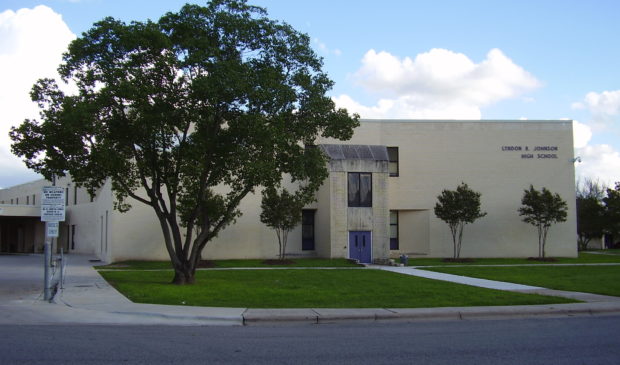AISD magnet school policy in turmoil
Friday, April 7, 2017 by
Joseph Caterine Emotions ran high as Austin Independent School District trustees, school alums and parents weighed in on the district’s magnet school policy at the board’s special called meeting April 3.
The board deliberated for several hours before it voted to adopt the Facility Master Plan update Monday night, and one of the most contentious issues of that discussion was the future of the city’s top magnet high school – the Liberal Arts and Science Academy.
The school currently resides on the campus of Lyndon B. Johnson High School in East Austin, where it was originally founded in 2007, when the Science Academy was combined with the Liberal Arts Academy. In the end, the board voted 6-3 to approve the update, including the recommendation that the LASA relocation be one of the top priority actions taken in the next six years.
LASA has had to deny qualified applicants for some time due to overcrowding, and the facilities update recommends that it be moved to a new central location in order to accommodate its growth and make it accessible to the city at large.
It is unclear where the final decision on a central location originated, however, as Trustee Edmund Gordon discovered through questioning AISD staff and members of the Facilities and Bond Planning Advisory Committee after he proposed an amendment to add a magnet school strategy to the update.
Chief Officer of Teaching and Learning Edmund Oropez explained that last September, staff had presented the board with three possible options to address LASA’s problem: repurposing a school in South Austin where LASA could be moved, building a second magnet high school from scratch in South Austin or moving it to a central location, the idea that was on the table.
“Did the board give you any direction on that?” Gordon asked.
Oropez responded that it had not, and that FABPAC had arrived at that decision working with staff.
Trustee Yasmin Wagner fired back at Gordon’s implication, claiming that the decision was based on the widespread community input the committee had received as it put together the update document.
“What we heard resoundingly from both (LBJ and LASA’s campus advisory councils) was to separate the schools and to move LASA centrally,” she said.
Committee member Cherylann Campbell clarified that the board had given the consultants direction as to LASA’s future last summer and that FABPAC had worked off of their recommendations. Trustee Amber Elenz said that part of the confusion might be coming from the fact that the board did not vote on any formal resolution but only had conversations about LASA.
“But I think it’s important for people to know that (the decision) didn’t come from nowhere,” she said.
Regardless of where the process started, Trustee Paul Saldaña (who recently resigned) said that it was within the purview of the board to redirect AISD’s magnet school policy as Gordon was attempting to do with his amendment to the update.
“With all due respect, LBJ and LASA are located in Trustee Gordon’s district, so I think what he has to say is equally important to the conversation,” he said.
Gordon’s amendment failed to pass.
Community members also took sides during the public hearing. Sondra Marks, a member of LASA’s Campus Advisory Council, said that at meetings over the past few months parents from both schools told FABPAC members that they wanted the schools to split. She accused those voicing dissent at the meeting that night as arriving at the 11th hour.
“We know this is typical of those who have not done the hard work all along and now want to derail the thought-out, well-considered recommendations of FABPAC based on CAC and community input,” she said.
As the senior class president of LBJ’s 1990 graduating class, Sam Turner said that the decision to have both schools located on the same campus forced disparate communities out of their comfort zones and that it was a “wonderful thing.” He also reminded the board that everyone in Austin was watching.
“We see you looking directly at one of the best ideas ever to be implemented in education in Austin, a program that had as one of its goals a redress of historical and institutional racism, and no matter what you’re telling yourselves, you are on the verge of rolling it back with your eyes open,” he said.
The Austin Monitor’s work is made possible by donations from the community. Though our reporting covers donors from time to time, we are careful to keep business and editorial efforts separate while maintaining transparency. A complete list of donors is available here, and our code of ethics is explained here.
You're a community leader
And we’re honored you look to us for serious, in-depth news. You know a strong community needs local and dedicated watchdog reporting. We’re here for you and that won’t change. Now will you take the powerful next step and support our nonprofit news organization?









